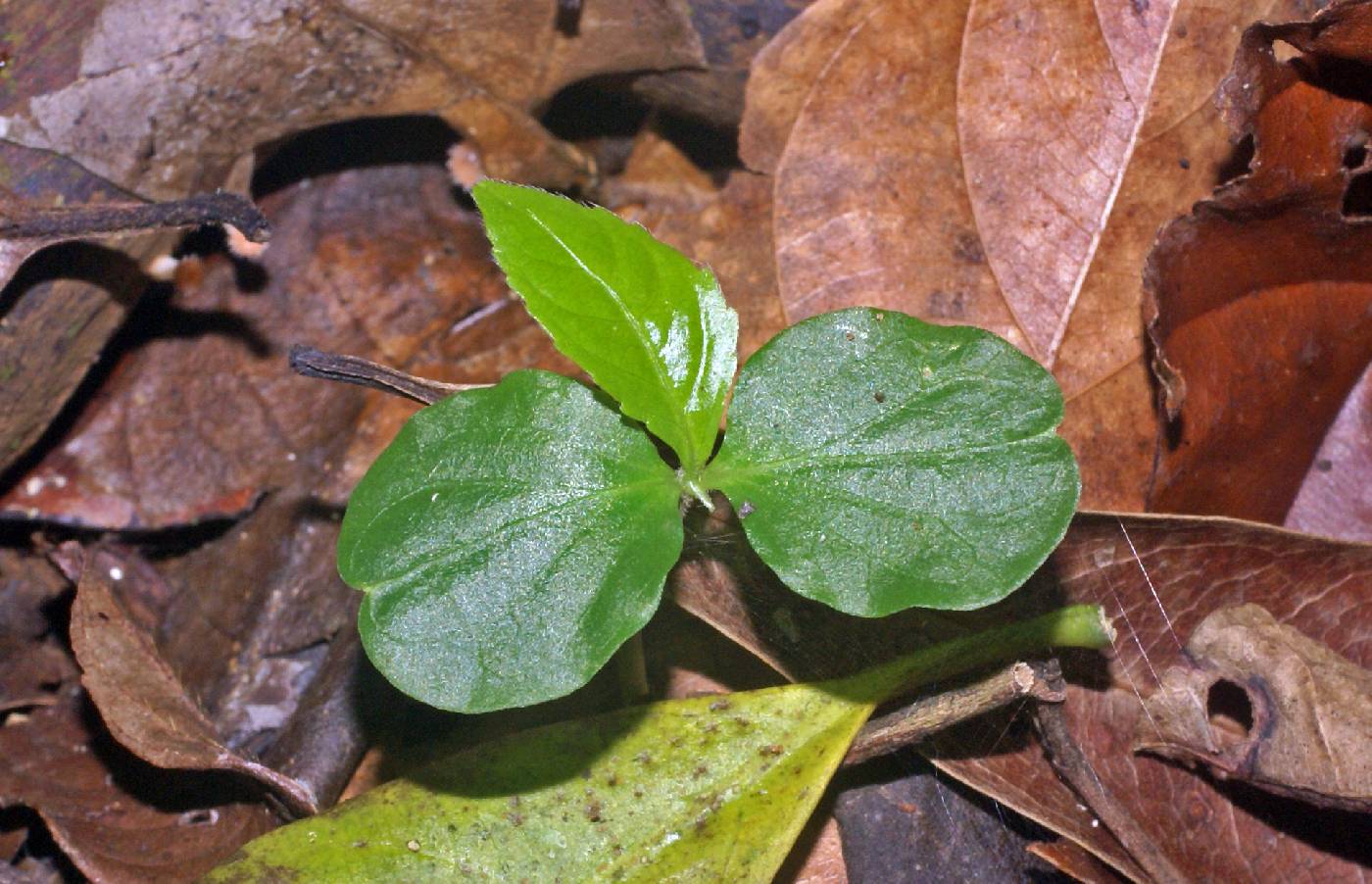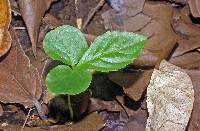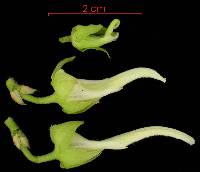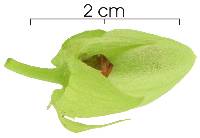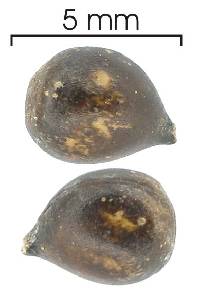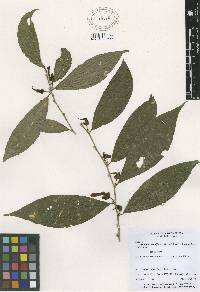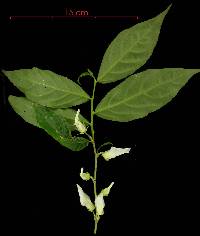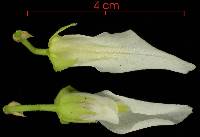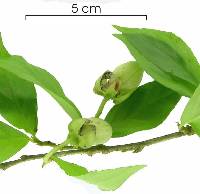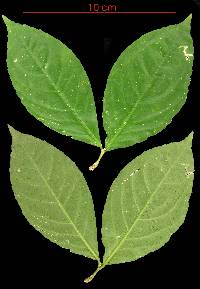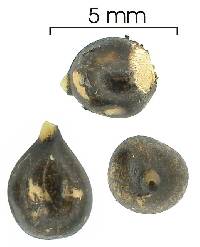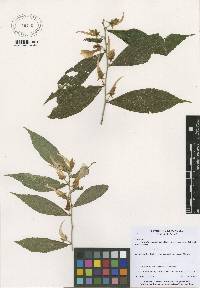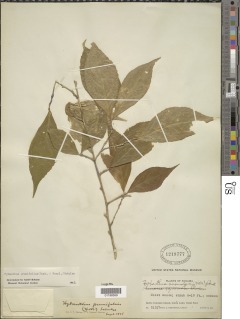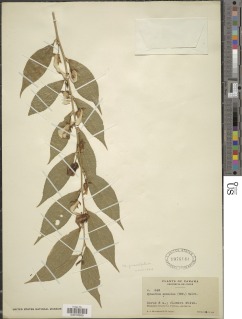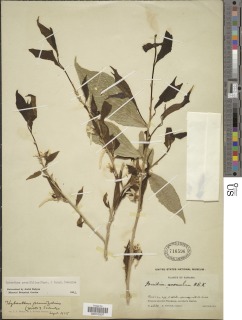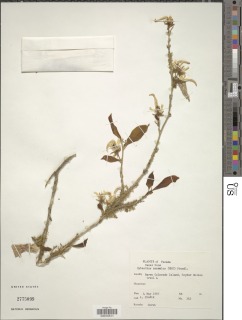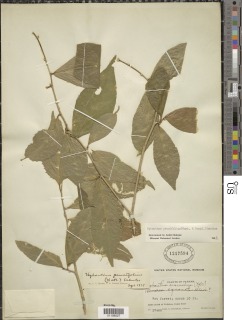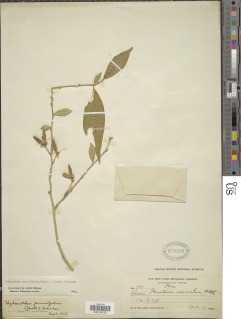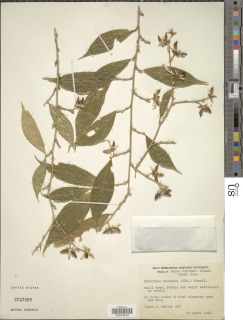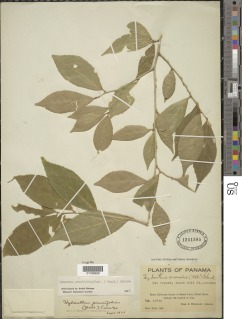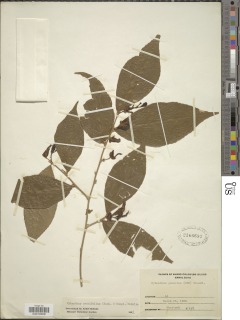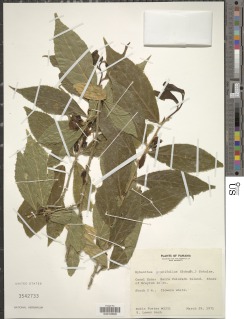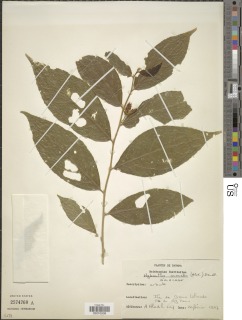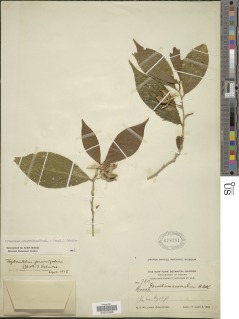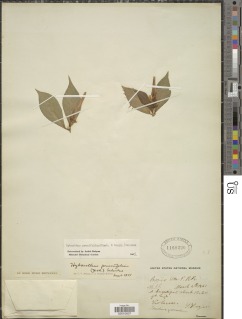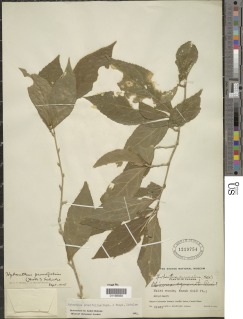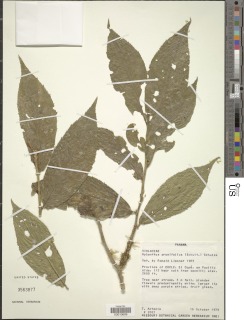

|
|
|
|
Family: Violaceae
Flores de lluvia
|
Description: A shrub of the shaded forest understory, seldom more than 4 m tall and usually less. Stem typically leans, especially in larger plants, and has irregular branches. Leaves are mostly alternate, but the final pair appears opposite; they are toothed, with a long, pointed tip. Stipules are white. Reproduction: Hybanthus is one of a number of species which flower after rains during the dry season. Flowers are fairly large, 1-2 cm long, mostly white but with yellow marks. Fruits are small green capsules produced early in the wet season. Seeds are dispersed explosively, when the drying capsule pops open. Distribution: This is the dominant understory plant of the old-growth forest of Barro Colorado Island, so abundant there is nearly always a Hybanthus within sight. Common but not as abundant on the peninsulas around Barro Colorado Island and in the central part of Pipeline Rd, near the Limbo Hunt Club. Never seen right on Pipeline Rd, only in the forest. Not seen elsewhere in the Canal area, which is remarkable given its abundance at Barro Colorado. Similar Species: Toothed leaves are unusual in the lowland tropics, and coupled with whitish stipules, make this plant fairly easy to learn. The most similar species is LK turnpa Turnera panamensis, LK2 whose toothed leaves are the same size and shape as Hybanthus; here the whitish stipule of Hybanthus is the easiest difference to look for. Several Flacourtiaceae, especially the genus LK casea1 Casearia, LK2 have toothed leaves superficially like those of Hybanthus, but usually more regularly spaced and larger. Descripción: Árbol o arbusto de 2 a 6 m de alto. Tronco y ramas con lenticelas blancas. Hojas simples y alternas, de 5-15 x 2-6 cm, elípticas, con ápice acuminado, bordes aserrados o dentados y base aguda. Estípulas triangulares, blancas, persistentes en los ápices de las ramitas. Pecíolo de 0.4-0.7 cm de largo y ligeramente acanalado en la parte superior. Flores blancas y con el pétalo inferior de mayor tamaño, unguiculado, con la uña gibosa y sacciforme en la base. Frutos en cápsulas elipsoidales, de 1-2 cm de largo, verdes, con restos del cáliz en la base. Datos Ecológicos: La especie crece a bajas elevaciones, en bosques húmedos. En Panamá se encuentra en las provincias de Bocas del Toro, Coclé, Colón, Darién, Panamá y la comarca de Guna Yala. Común y fácil de observar en el bosque viejo de la isla de Barro Colorado. Florece y fructifica sincrónicamente a inicios de la estación lluviosa, entre mayo y junio. Las flores son visitadas por abejas y otros insectos. Las semillas son dispersadas por la abertura de los frutos y los animales. Especies Parecidas: A menudo se confunde con LK acidni Acidoton nicaraguensis LK2 , pero en A. nicaraguensis los frutos son cápsulas tricocas de menor tamaño y no tienen los restos del cáliz tan grandes como los de H. prunifolius. También se puede confundir con LK hybaat Hybanthus attenuatus LK2 y LK hybade Hybanthus denticulatus LK2 , pero en estas especies los frutos son de menor tamaño. Usos: La especie no tiene usos conocidos. H. anomalus (H.B.K.) Melch. Shrub or small tree, 1-6 m tall, sparsely pubescent on lower leaf surfaces and midribs above, densely so on young stems, pedicels, and bracts. Leaves alternate; stipules triangular, to 3 mm long, whitish, subpersistent; petioles to 7 mm long; blades elliptic, acuminate, acute at base, 5-15 cm long, 2.5-6 cm wide, remotely to prominently serrate-crenate. Flowers solitary in axils, puberulent; pedicels ca 1.5 cm long, articulate above middle, bracteolate at base; sepals 5, triangular-ovate, acute, ca 9 mm long, persistent; petals 5, white, unequal, the anterior petal 3.5-4 cm long, 1.5-2.5 cm wide, spatulate, with the median lobe green to pale yellow below middle, puberulent inside near base-, the remaining petals +/- oblong, the lateral ones ca 1.5 cm long, longer than the posterior ones; stamens 5; anthers ca 3 cm long, the connective appendages brown, much exceeding anthers, weakly fused laterally to form nectariferous appendages at bases of anthers; filaments very short; style ca 5 mm long, curved near apex toward anterior petal, persistent; stigma terminal, held well above staminal appendages. Capsules ellipsoid, 3-sided, acute, 1-2 cm long; seeds ovoid, 4-5 mm long, tan. Croat 8900. Costa Rica to Colombia and Venezuela. In Panama known from tropical moist forest in the Canal Zone, San Blas, Coclé, Panama, and Darién, from tropical wet forest in Colon and Darién, and from premontane rain forest in Darién. Reported from premontane wet forest in Costa Rica (Holdridge et al., 1971). |
|
|
|

